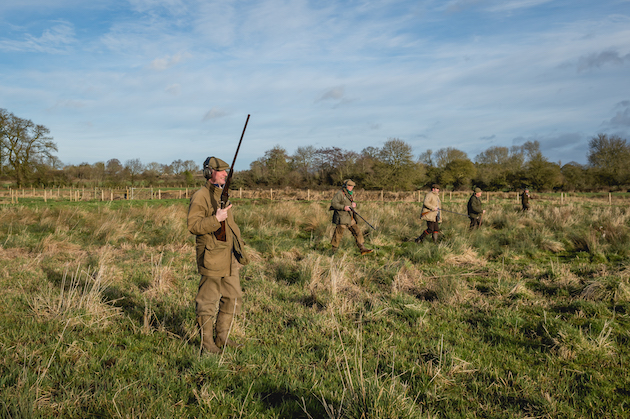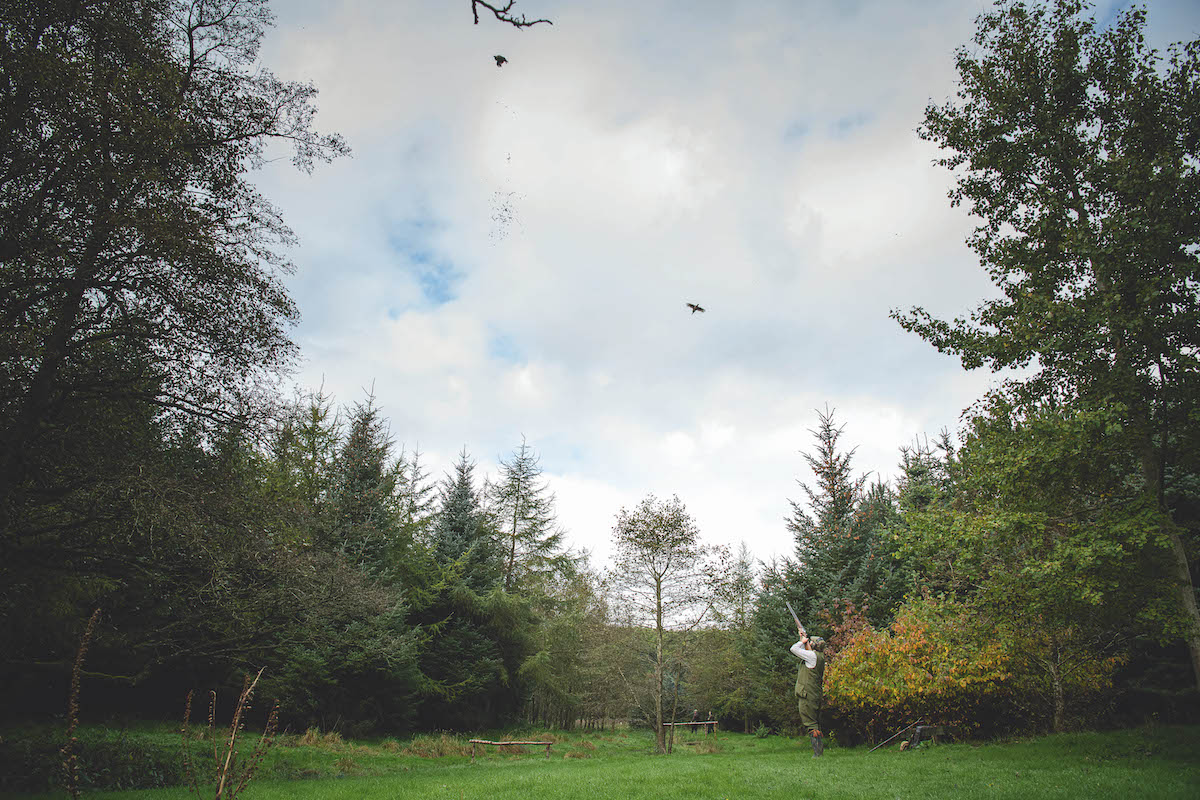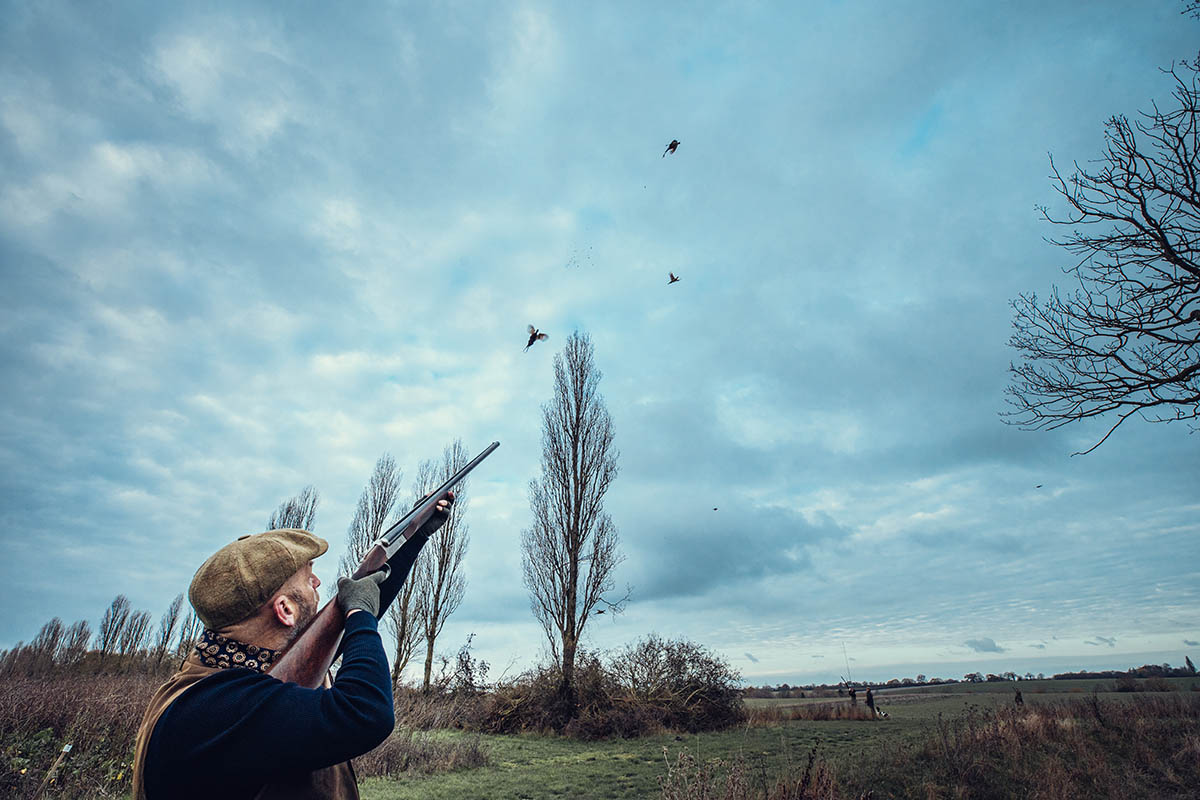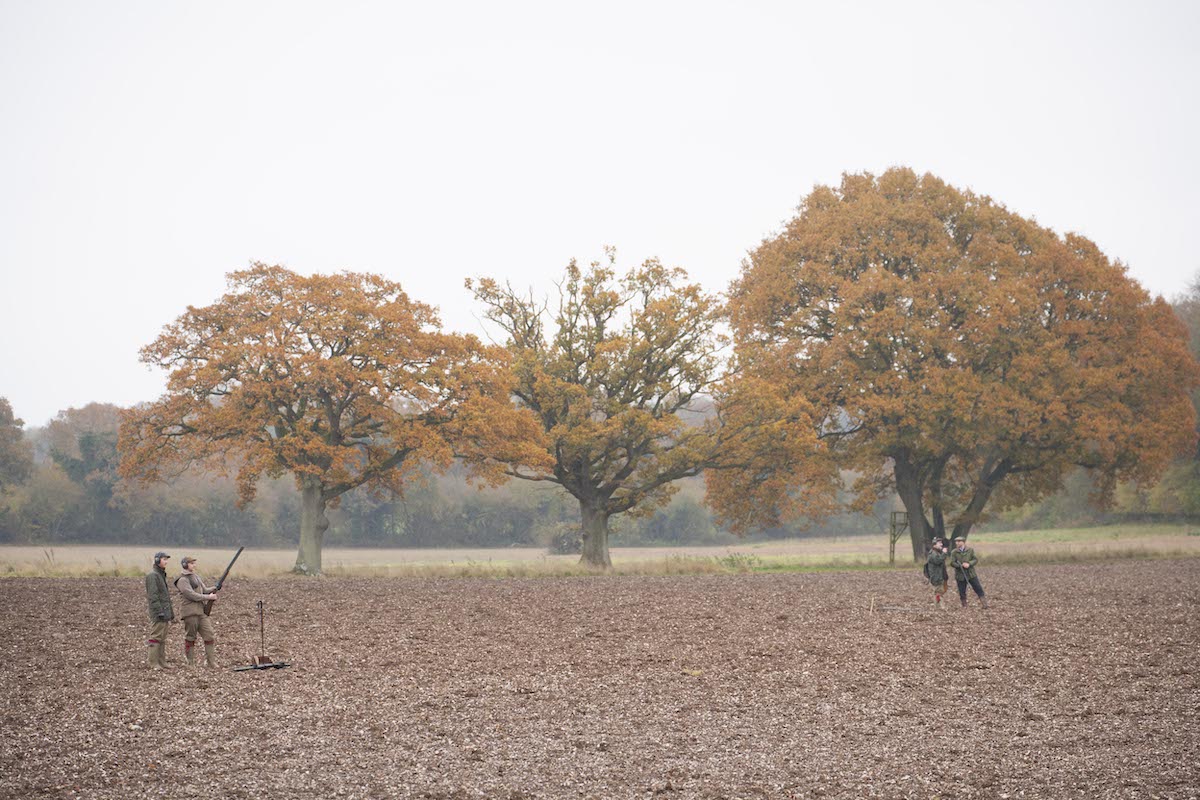One barrel is all you need
Using a single-barrelled shotgun focuses the mind says Simon Reinhold

Simon Reinhold with his single-barrelled shotgun, walking the marsh full of snipe
A single-shot, single-barrelled shotgun is not popular these days. The guns are looked down upon as somehow ‘less than’. When I began my shooting life under my father’s instruction, I was as excited as any 14-year-old could be. I had completed my three-year apprenticeship of various gun-, dog- and bird-related tasks and my chance had come on the last drive of one of his small syndicate days.
I was confused and crestfallen when I was given only one 16-bore cartridge for my grandfather’s Belgian non-ejector. Without wishing to seem ungrateful, I felt I had to ask the question: “Why can’t I load both barrels?” My father’s response has stuck with me ever since: “Get it right with the first barrel and you won’t need the second.”
I still go back to this now when the wheels fall off in a pigeon hide or on a peg. This can be through fatigue in the case of the former or a lack of concentration in the latter. I take out one cartridge to focus my mind on the task in hand, not relying on the second barrel.
A single-barrelled shotgun costs less
You may have come across the more common single-barrelled guns because they can be picked up for very little money. Working guns such as an AYA Cosmos or a Harrington & Richardson were built to last for farmsteads and pioneers. They have no finesse — finesse was not required on a frontier. Durability was the only thing that mattered.

Kevin Goate takes brief break on a folding seat
Eccentric
There were also some genuinely eccentric guns, special orders that have no reason to exist other than on the whim of a wealthy patron.
It is this category that the single barrelled shotgun I used on a conservation-minded shoot near Hingham in Norfolk falls into — a 12-bore made by Stephen Grant on an Alex Henry falling block rifle action. It was made in 1873 for the Duke of Marlborough. I like to think he walked around potting the odd pheasant with a beautifully made and highly unusual gun. It is so unusual that it has a special place in the collection of Nicholas Holt of Holts Auctioneers and I am grateful to my boss for allowing me to borrow it.
My fellow Guns on a blustery day in Norfolk were all like me, enthusiasts for more walking than shooting. There was a knowing smile when I recounted one of my favourite shooting invitations; it simply read: “Come to lunch. Bring a gun.”
There are syndicates like this all over the country but one thing that stood out on this day was that five of the assembled company worked for Natural England (NE). They all believe that truly sustainable shooting and conservation can work in perfect harmony. Hearing NE staff publicly state that may surprise some, but I am convinced there is a silent majority in the country who understand the benefits that shooting can bring.
I was flattered that more than half the Guns, knowing I was bringing a single-barrelled shotgun, had brought single barrel firearms themselves for the morning. Various types were on display including a pinfire and a classic Greener GP, a stalwart design of the British Empire.
To the drive
As we walked to the first drive, Old Hall, with a strengthening wind at our backs, our sense of anticipation grew. A piece of wild bird cover was pushed into a small wood that was essentially an overgrown pit. The hen pheasant that resided there caught the wind and outwitted us all. But we were treated to the spectacle of five pristine roe deer. Two jays also used their guile and found the gap to safety. There was no instruction not to shoot woodcock, but the four we saw were all unsaluted. It seems we were all of the same mind.
The next marsh was lifting with snipe, all of which we left. As it was a Site of Special Scientifc Interest, I dropped the block on the Grant and it flicked back my lead cartridge to be replaced with bismuth. The marsh was so flooded from recent rainfall that only half of it could be walked because footbridges were submerged. It would have been foolish to try to find the safe crossing points — it was clearly too wet for pheasants — but it led us to the next small wood.

A Labrador retrieves the first bird of the day
Cormorants
From the sound of the odd shot at a pigeon, teal and mallard lifted off the ancient mere adjacent to the marsh and the pigeons started to move. I got distracted by the slow procession of a group of cormorants steered by their paddle-shaped tails but soon refocused on pigeons. Flighting pigeons is one of my favourite pastimes and I found myself going into ‘target acquisition mode’, scanning the trees for movement. The fact that my single-barrelled shotgun only offered me one shot meant my focus was greater than usual.
The first bird looking to land in the ivy-clad tree fell. Having a successful shot under my belt was perhaps why my concentration level dropped and I missed the next three.

Simon as a walking Gun bags a cock pheasant
On the way to the next wood, I was asked to be a walking Gun down the side of the young plantation that led towards the old marl pit which comprises its bottom half. We passed piled-up cuttings of the conservation headlands that will be used to seed other areas with wildflowers — the deep conservation theme of this shoot was becoming clear.
A Jack Russell, of no fixed patronage, proved an able guerrilla volunteer. He broadly knew the plan but had his own ideas as to how it might be achieved. It is him I had to thank because we got to the end of the young trees and the first of the cock pheasants made a break through my side then fell to my single shot. It was something of a relief that I had done everyone’s efforts justice, though other birds flew forward well.
After a pit stop, we headed towards two fields of wild bird cover. Rory, the part-time keeper, said the landowner decided to move away from conventional farming not out of necessity but as a logical conclusion of a family conversation. The farm could have been three or four big, conventional, arable fields but in that there would have been little to nourish the soul. Instead, the landowner moved to a conservation model in conjunction with advice from Natural England.

Paul Osborn bags a bird with a blackpowder single-barrel gun
Glory
We lined the back of a whole field of wild bird cover and began to push it through — and the conservation value of this farm revealed itself in all its glory. It was described to me as “a piece that hasn’t grown very well” and clouds of linnets and yellowhammers lifted out of it. There were plenty of pheasants too but most escaped.
When we moved through deliberately wetted fields with clumps of brambles in the next drive, the truly wild birds briefly revealed themselves, all three hens nipping over the boundary 200 yards ahead on my side. A young plantation to walk through to finish yielded several pheasants and I was fortunate that both hens breaking out my side fell.
As I drove away, I realised that I was passing the farm on which I shot my very first pigeon with a childhood friend. It was a treasured memory and is now at the forefront of my mind once again. Using a single-barrelled shotgun does focus the mind, but perhaps on the fact that the success or failure of the shot is not the most valuable part of what we do.








